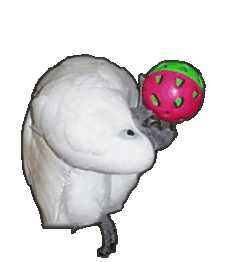Published Jul 20, 2003
There was this awful accident in Santa Monica last week — an elderly driver got in a minor fender-bender, got confused and drove into the street Farmer’s Market, which was packed with pedestrians and farmers peddling their goods. He killed more than ten people, including a two-year-old girl and an elderly survivor of Stalin’s oppression.
There are a great many issues that have been found already to have contributed to the accident, from the initial fender-bender to the fact that Santa Monica only used wooden sawhorses, not concrete Jersey barriers or metal posts, to stop traffic from entering the Farmer’s Market, which was on Second Street itself.
One factor that hasn’t been discussed much is the proximal cause of the accident, admitted by the driver — he confused the brakes and the gas and floored it while he meant to brake. According to the LA Times, this is a common error and has happened more than 10,000 times in the past 20 years. Apparently, it’s particularly common among older drivers.
But it’s not that odd of an accident, when you think about it. A driver doesn’t normally look at the pedals at all, and on some cars they’re basically impossible to see when you’re driving. We don’t expect people to carry out any other tasks in which they can’t see what they’re doing — sure, people touch-type, but many more hunt-and-peck. It’s only in driving that virtually every single person is expected to be able to carry out major tasks — operating the pedals — while they attend to another, substantially different task, working the wheel. The nature of this task seems to increase the chance of errors just like the tragic one that took place in Santa Monica, in which the operator makes a serious mistake in the secondary, non-viewable task.
The software project manager in me wants to fix the interface to reduce the chance of this error. For instance, we might move the throttle control and brakes to the wheel column, a configuration already used by the disabled. Or we might put switches on the wheel itself, near where drivers’ hands should be. Usually, fixing a broken interface involves just this kind of an approach — thinking outside of the box to place controls and options in more useful, reasonable places.
But driving is a special case — dozens of millions are already trained in using the existing system. And learning a new system always results in an increased rate of errors, errors we can’t afford in a new throttle control system (after all, the goal is to reduce the rate of injuries). So, we need to work from the existing approach and expand or adjust it prudently to limit the kind of errors that are our targets. I can think of two reasonable modifications:
- Display a light on the dashboard to indicate acceleration. This light should be hooked to the pedal itself — perhaps pressing the pedal could close a circuit. A company could probably fairly easily produce a kit that garages could install on existing cars. This light would inform people when they’re accelerating by command (as opposed to by accident), so, if they’re expecting to stop, there will be visual evidence that they’re using the gas pedal. The LA Times article states that elderly drivers accidentally press the gas rather than the brakes at a much higher rate than younger drivers; elderly drivers already modify their vehicles with accessories like curb feelers, so it’s likely they’d be willing to add a gadget such as this. The heads-up displays on high-end cars could also be tweaked to display information on acceleration.
- The gas pedal on automatic transmission cars could be moved to the left, where the clutch currently is. The gas and the brakes are really only next to each other because they need to be operated in unison with the clutch, but most cars these days are automatic transmission (and people who select manual transmissions attend more to driving and are probably less likely to confuse the gas with the brakes). So why not use that space left free by the deletion of the clutch to contain the gas pedal? People currently drive with their right feet, so by putting the new gas pedal under their left foot you minimize the chance of them accidentally accelerating. Braking, however, will continue to be natural and operate as expected.
Stupid ideas? Probably so. What did you expect? You’re reading the blog of some idiot from LA. But if there’s really more than 1000 cases every year in which drivers confuse the gas and the brakes, well, let’s test some modifications and see if they result in any decrease in accidents. I’d bet that the latter option presented above would have prevented the Santa Monica Farmer’s Market accident, and that the former would have drastically decreased the death toll.
